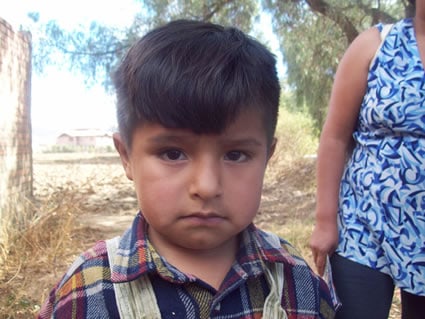When we choose to sponsor a child, most of us closely examine the photos of the available children. The children stand very straight in their pictures, as if they are in the military service. And many have serious looks on their faces.
The children are generally dressed well, but for some reason they don’t all smile for the camera. Does this mean they are unhappy?
I had the privilege of being at several child development centers in Bolivia as they took the child sponsorship photos. Once I witnessed it, it all made a lot more sense.
It also showed me that I, at many times in the past, had read way too much into the child photos — things that weren’t really there.
It was easy to assume that because a child didn’t smile in the photo, it was because of the child’s difficult and sad life.
I’ve subsequently received photos of my sponsored children posing with gifts I had sent and they had big smiles on their faces. So it was easy to assume that my gift had broken through their “sad life” and that, finally, the children were happy.
So I thought I would share what it was really like when it came to taking child photos.
Every child development center has a staff member who handles the letters, takes the photos, and accompanies any sponsor visits.
Basically, they deal with everything relating to the relationship between the sponsor and the sponsor’s child.
In Bolivia they call these staff the “sponsorship responsible.” In Peru they call them “secretary” and in El Salvador “sponsorship coordinator.” Whatever the title, they are all the same position. These staff take the photos and send them to the country office.
In the country office, someone receives the photos and makes sure that they are in accordance to Compassion’s standards. For example, the child’s eyes must be open and the child’s hands and ears must be visible, in addition to other requirements.
The person in charge of taking child photos at each child development center has a challenging task. Imagine accompanying 30 children to a location and making sure they behave, don’t get into accidents or squabbles as they await their turns, and pose willingly for their photos.
The child photo should not have inappropriate things in the background. For instance, a street dog can’t be in the background (and they are all over the place). A placard displaying the child’s Compassion number is placed on the ground in front of the child. This way the staff member is able to organize the photos easily.
The video below is of Delicia. She is the “sponsorship responsible” for Bolivia’s Pucara Grande Student Center.
At this photography session, she had to photograph about a dozen children. In the video, Delicia is photographing a little boy named José, and José was quite the character. He did not have the patience to stand still while Delicia took his picture.
Delicia is one of the most patient women I’ve ever met. She dearly loves these children!
Watch the video and see how she patiently handles José. Notice how José’s mother gets involved to make sure her son stands up straight. Then notice how this serious little boy does a little dance at the end of the session!

